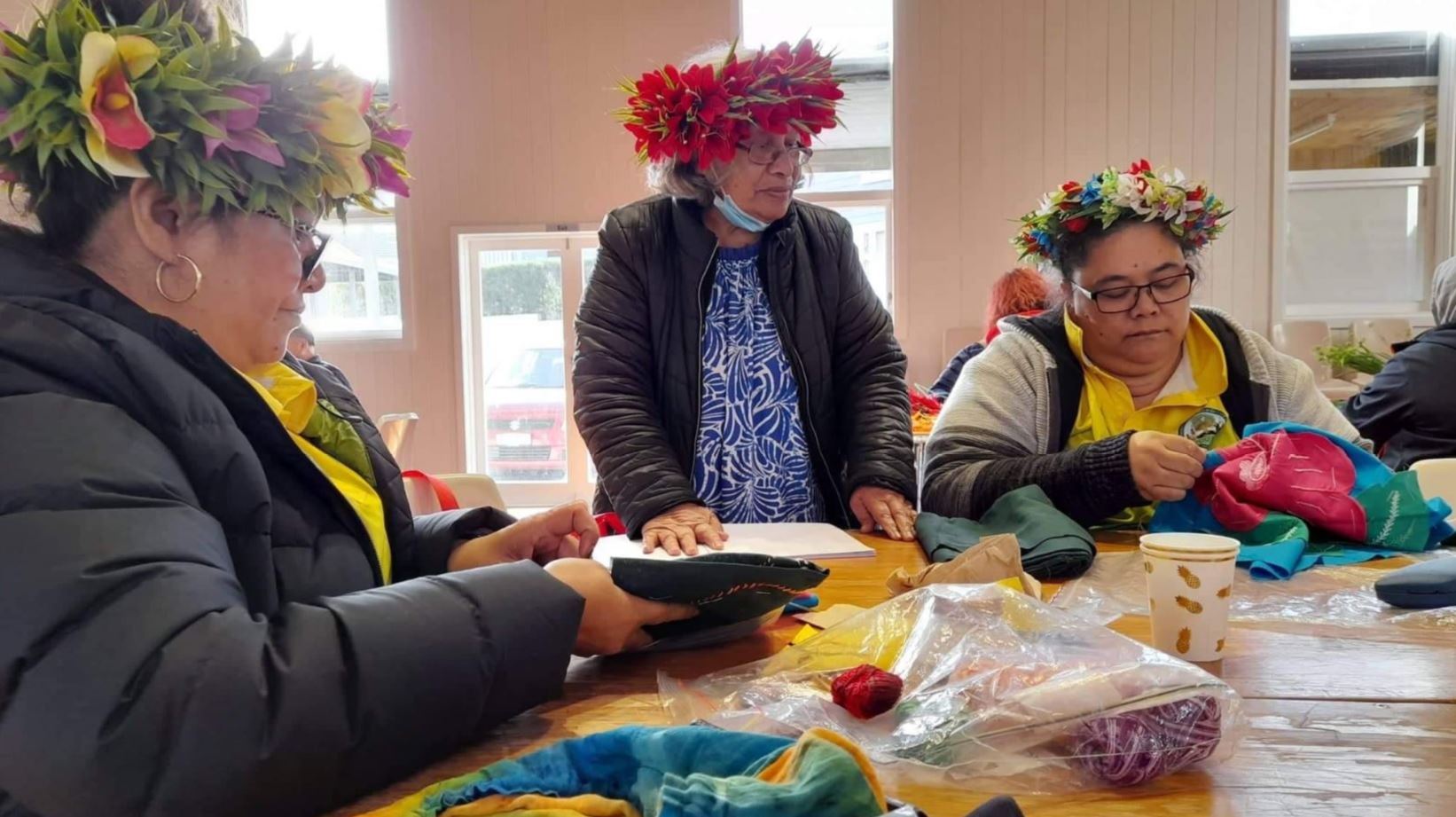Three generations keep Kuki Airani Tivaevae alive in Auckland City
Thursday 18 August 2022 | Written by Supplied | Published in Culture, National

Mama Nere Tara is keeping the art of Tivaevae alive. Photos: Kendall Vano/22081714
Attended by a small pocket of the Kuki Airani Community still residing in Auckland central, a group of mamas, young and old come together to teach and share in the traditional craft of Tivaevae/Tivaivai quilt-making. By Kendall Vano of Tagata Pasifika.
Sasha Tara is a second generation Cook Islander living in Tamaki Makaurau. For the past year she has participated in the Ponsonby Tivaevae Va’ine Tini group. Though not as confident as many in attendance, Sasha tries her best.
“Our mamas are not going to be here forever. We have to learn from them now so we can carry it on to the future,” Sasha says. “When I was younger I was shown a lot of stitching and sewing from my Nana.”
While she continues to learn the art of Tivaevae with guidance from the group, she is aware that there are others who are not as fortunate. This became the basis for Sasha’s mother Adéle’s creation of the group.
She proposed to build a collective sisterhood of Maori and Pacific mamas centred around the Tivaevae. Adéle says she always wanted to start a Tivaevae class with the aim of holding workshops to honour Cook Islands culture and traditions through Tivaevae and bring together the collective knowledge and wisdom of their elders.
“Our mamas can come in and share their skills, while introducing the younger generation to the artform in a safe and encouraging environment; protecting the thriving nature of the culture through shared crafts,” she says.
“The proud longevity of Tivaevae is a testimony to its practice and showcases that they are more than just a quilt, or a bedspread, but stand as a symbol of Kuki Airani’s creativity.”

This practice needs to be passed on, and passed down, a sentiment shared by all these va’ine.
“Tiveavae has become a vehicle to connect to the culture because it originally wasn’t, it was brought over by the missionaries’ wives. Even though we’ve adopted it and adapted as our own, it’s still something to be proud of culturally.”
Adéle implored her mother, Nere Tara to head the workshops. A craft taught to the young by the mamas of the villages back in her time, regretfully was missed on Mama Nere. She says, like most generations, the youth are likely to neglect the patient disciplines and practices of the old as she did.
Mama Nere opened up about her late arrival to the practice. She admits she did not grow up with skills learnt to craft Tivaevae. She was already in her mid-forties by the time she sought guidance and applied herself.
Mama Nere, like her daughter Adéle, had grown up around the craft but had never picked it up. As a young girl she left Aitutaki to continue her studies in Rarotonga and then moved on to the University of the South Pacific before settling in Aotearoa.

Mama Nere was already confident in her crochet abilities yet yearned for an opportunity to learn Tivaevae. She wasn’t alone as she and many of the mamas in her local church (the Ponsonby Seventh Day Adventist Church) were keen to learn.
As a group they approached one of the Mamas who knew how to cut, stitch and sew Tivaevae. Aunty Tirita Rongo Bailey taught them everything they know. Following in the footsteps of many mamas before her, she obliged them and passed on her knowledge to the mamas.
“She taught many of the ladies here in the church. On Sundays we would go over to her house, and sew all day,” says Nere. She helped teach a lot of the mamas at attendance at the workshop.”
“And now, we’re paying forward,” she adds, “so that others can share in Tivaevae.”
Mama Nere says it is never too late to learn. “It feels good to know that the women are confident in sharing their knowledge. I was in tears seeing what they’ve achieved.”
And now, thanks to this family, the art of Tivaevae may have a fighting chance for tomorrow and the generations to come.














































